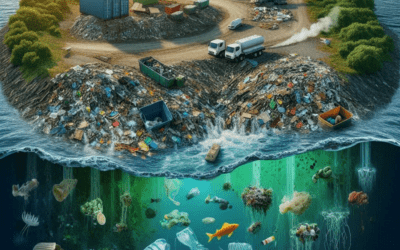Kiel is the capital of Schleswig-Holstein, and sits on the southwest shore of the Baltic Sea. It’s also Germany’s first Zero Waste City, certified in April 2024. A growing number of cities across the world are working towards the same goal, so what are the challenges, timescales and benefits of becoming a Zero Waste City?
In Europe, certification is managed by the Zero Waste Europe – a non-profit organisation that is currently working with nearly 500 cities across the continent. Kiel is just one of those cities – across Europe, city authorities are using the support of Zero Waste Europe to reduce waste significantly – and completely.
Europe isn’t the only region to be looking at this waste revolution. In India, the city of Pune is working towards the same goal, and several major cities in the USA have made zero waste commitments.
Kiel’s journey to zero waste
So, what did Kiel do to achieve the status of Zero Waste City? There are five stages within the Zero Waste Europe framework:
- Supply an expression of interest to Zero Waste Europe.
- Go through a ‘commitment’ phase.
- Complete a scorecard and submit evidence over a two-year period.
- Become a certified Zero Waste City if the relevant performance and impact measures are met.
- Continual improvement and performance measurement.
Every city’s journey to becoming zero waste is a different one. It depends on the state of play at the starting point, and the specific areas where the city can improve. The commitment phase helps candidate cities to look at the areas where they can make a significant, measurable difference. Putting a plan together to tackle these key areas can help the city to move to a zero waste position. In Kiel, programmes included:
- Grants to help parents switch from disposable nappies to cloth nappies.
- Free reusable bags for buying fruit and vegetables.
- Public bodies banned from using single-use items.
- Introducing a Pay As You Throw waste management system.
- Scheme to turn waste hair from hairdressers into material that filters oil from water.
These schemes are a mix of voluntary and mandatory programmes, designed to effect change quickly while also keeping Kiel’s population on board with the changes. But achieving zero waste status is really just the start. The city has a number of measures that it is still planning or introducing slowly – over the coming years, Zero Waste Europe will continue to monitor its work and impact. This makes sure that the city’s authorities, businesses and residents remain committed to reducing waste permanently.
The rural zero waste city challenge
Also in Europe, but in very different circumstances, the rural Montenegrin city of Gusinje sits in beautiful surroundings, close to the border with Albania. It has a very small population – just over 4,000 people. Of the 1,168 households in the area, only 286 actively participated in waste or recycling collections before the zero waste project.
According to the city’s case study: “The NGO Zero Waste Montenegro (ZWMNE) approached the Regional Development Agency for Bjelasica, Komovi i Prokletije (RDA) to bring together one of the 23 municipalities of the country on the path to Zero Waste, as an example to the other municipalities. Gusinje, the third smallest municipality of Montenegro, showed enthusiasm to participate in the adventure and commitment.”
As a country, Montenegro has many challenges when it comes to waste management and disposal. As well as geographical challenges, the country also has unregulated landfills, limited financial and human resources placed onto waste issues, and an immature secondary market for recycled materials.
So Gusinje authorities and residents, while enthusiastic about zero waste, had much further to go than the people of Kiel. When the project started, most waste was going to landfill, with each resident generating around 99kg of waste per year. There was no waste separation, and relatively little waste management education.
What did Gusinje do?
- In-depth survey, managed by Zero Waste Europe
- Creation of a Local Advisory Board, made up of local citizens and decision makers.
- Switch from a single-bin collection model to a five-bin separated waste collection.
- Education workshops for residents to help them understand the new system.
- Publicity and targeted flyers to reinforce messaging.
- Constructed a materials recovery facility.
- Encouraged residents to start home composting.
- Local milk and juice producers given glass bottles, to encourage deposit refund schemes.
- Organised clean-up events for landfill areas.
- Awards scheme for local communities.
After two years, 61% of waste was being sorted by Gusinje’s households – a significant amount of which was plastic which would previously have gone to landfill. Organic waste going to landfill dropped from 21% to just 4%.
This is an encouraging start from what many cities would perceive as a low base. Even more encouragingly, 98.6% of Gusinje’s households and 100% of the companies in the city say they will support the local authority in its aim to continue work and become a certified Zero Waste municipality.
The work done in Gusinje has also inspired other communities in Montenegro to begin their own zero waste journeys.
Embarking on a zero waste journey
Waste going into landfill is a significant contributor to greenhouse gas emissions. From mining raw materials to failing to recycle useful materials, it’s critical that we manage waste better if we want to tackle the climate crisis.
Any city, town or community can start a zero waste journey. There are lots of helpful resources and programmes to help authorities or volunteer groups start to make a difference. And the more cities who take part, the more others will follow.
For further reading on Zero Waste Cities, be sure to visit zerowastecities.eu and the World Economic Forum.






